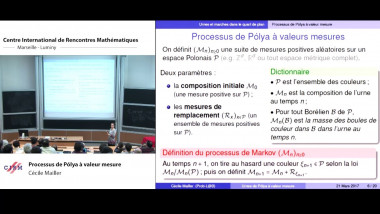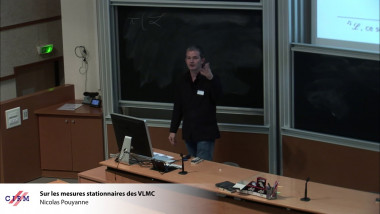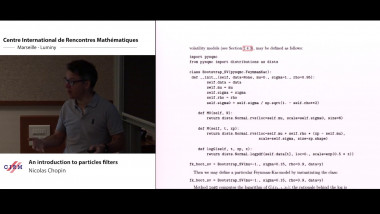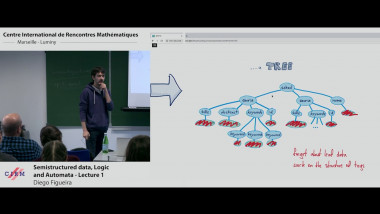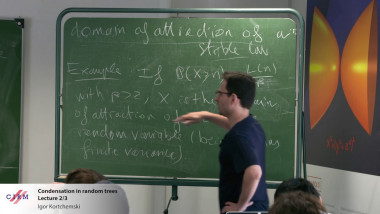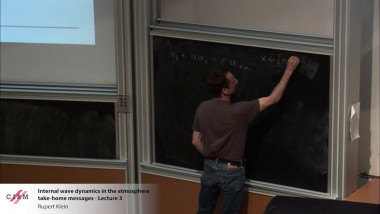Condensation in random trees 1/3
Apparaît également dans la collection : Random Trees and Graphs Summer School / École d'été GRaphes et Arbres ALéatoires
We study a particular family of random trees which exhibit a condensation phenomenon (identified by Jonsson & Stefánsson in 2011), meaning that a unique vertex with macroscopic degree emerges. This falls into the more general framework of studying the geometric behavior of large random discrete structures as their size grows. Trees appear in many different areas such as computer science (where trees appear in the analysis of random algorithms for instance connected with data allocation), combinatorics (trees are combinatorial objects by essence), mathematical genetics (as phylogenetic trees), in statistical physics (for instance in connection with random maps as we will see below) and in probability theory (where trees describe the genealogical structure of branching processes, fragmentation processes, etc.). We shall specifically focus on Bienaymé–Galton–Watson trees (which is the simplest possible genealogical model, where individuals reproduce in an asexual and stationary way), whose offspring distribution is subcritical and is regularly varying. The main tool is to code these trees by integer-valued random walks with negative drift, conditioned on a late return to the origin. The study of such random walks, which is of independent interest, reveals a "one-big jump principle" (identified by Armendáriz & Loulakis in 2011), thus explaining the condensation phenomenon.
Section 1 gives some history and motivations for studying Bienaymé–Galton–Watson trees. Section 2 defines Bienaymé–Galton–Watson trees. Section 3 explains how such trees can be coded by random walks, and introduce several useful tools, such as cyclic shifts and the Vervaat transformation, to study random walks under a conditioning involving positivity constraints. Section 4 contains exercises to manipulate connections between BGW trees and random walks, and to study ladder times of downward skip-free random walks. Section 5 gives estimates, such as maximal inequalities, for random walks in order to establish a "one-big jump principle". Section 6 transfers results on random walks to random trees in order to identity the condensation phenomenon.
The goal of these lecture notes is to be as most self-contained as possible.




















